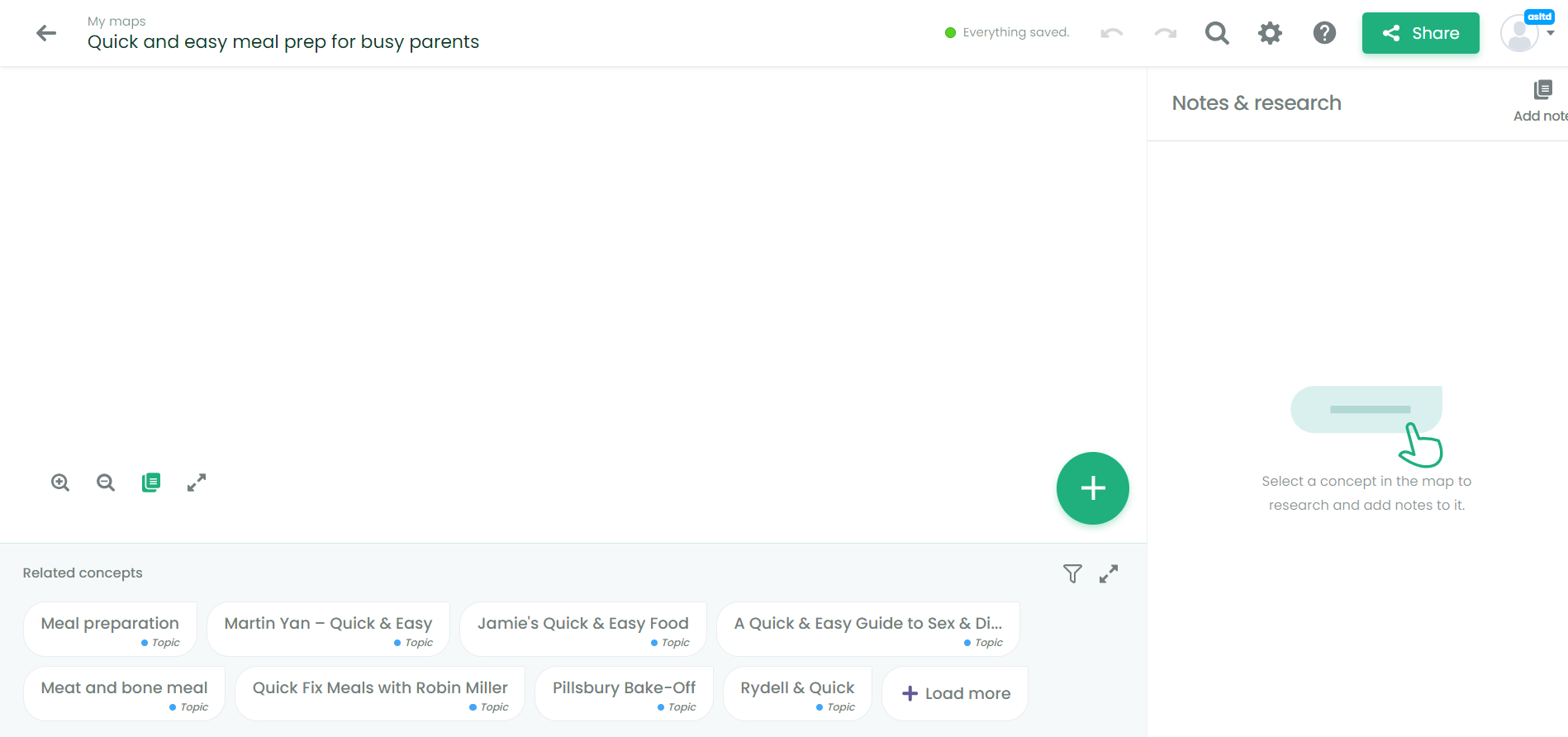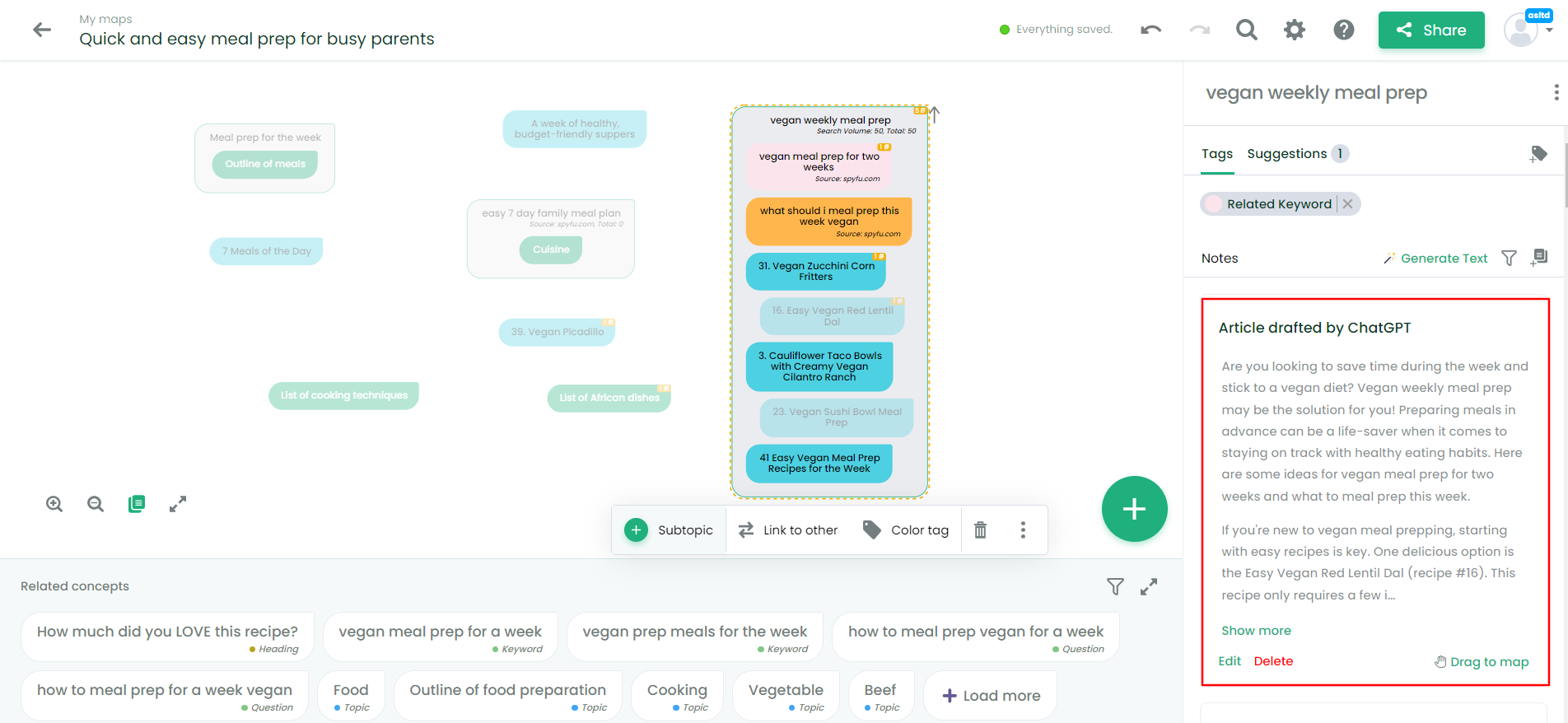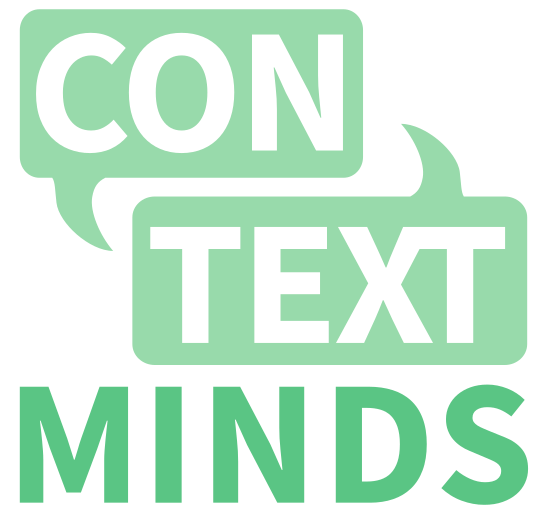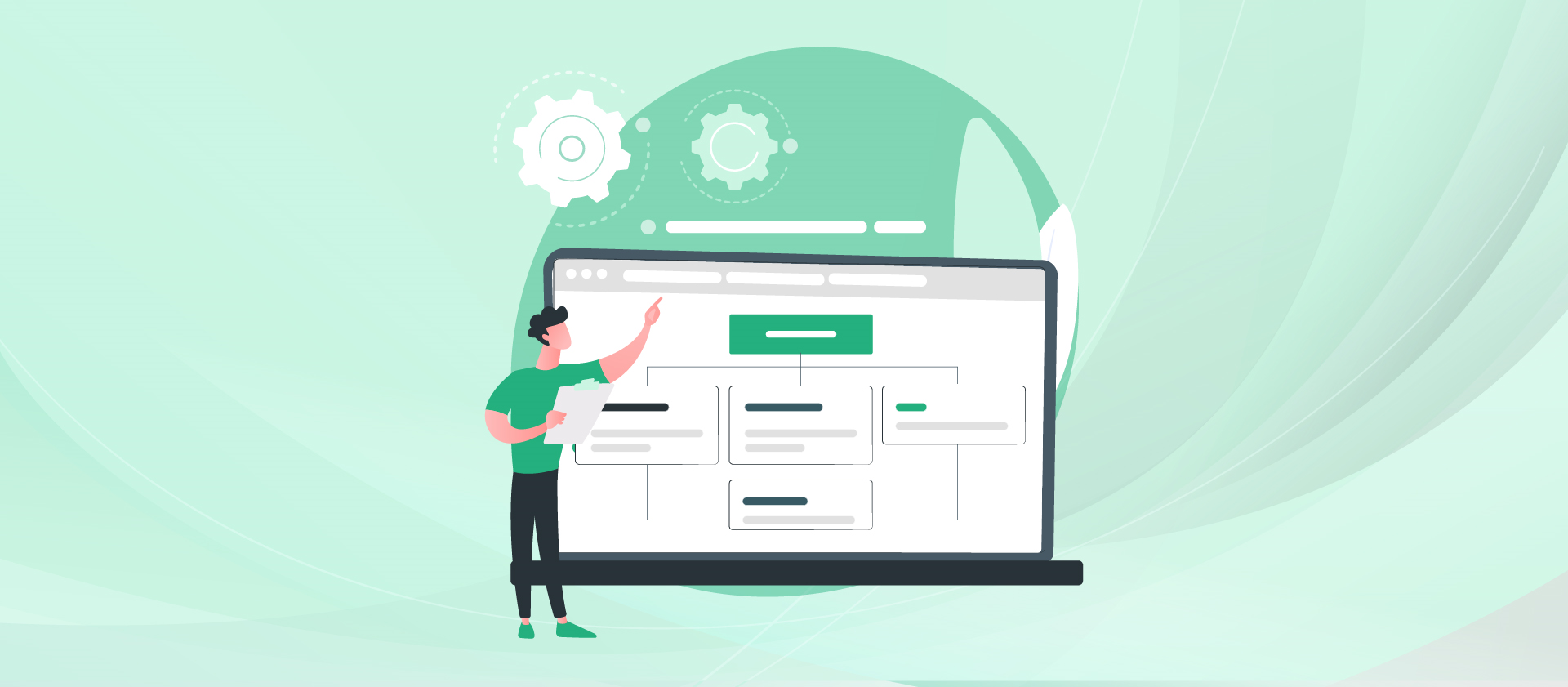Discover the Magic of AI: Unlocking the Power to Create Infinite Content Possibilities
How often have you brainstormed a fantastic idea, developed a solid outline, and only used it to create one piece of content?
We've all been there. Instead of reusing the same research, time, and effort for different content formats, we start the process anew.
However, is this the most efficient way to create content?
As Generative AI has become a crucial part of content marketing strategy, making everything more accessible and faster, sticking to the traditional content creation route won't cut it.
But it's not too late!
In this blog, I will show you the combined power of ChatGPT and ContextMinds, a visual keyword & topic research tool.
First, we'll create an SEO-focused outline as the starting point for any comprehensive content, and then craft 10 different content pieces from it.
Let's dive in!
Smarter Collaboration: ContextMinds and ChatGPT Integration
ContextMinds, a visual keyword and topic research tool, assists you in finding the most relevant keywords for your content. It gathers data from various sources and presents it in an easy-to-understand content map. Additionally, it suggests related topics, trending questions, community topics, and more to help you find the best subjects and write the most comprehensive content.
Now, with ChatGPT's integration, ContextMinds has become a one-stop-shop for your content needs. Instead of writing just one blog, you can create numerous content formats to reach your audience with the right content at the right time.
Before exploring the formats you can create with this integration, let's quickly learn how to assemble a great outline.
Create a Solid Outline with ContextMinds
ContextMinds offers a structured yet flexible approach to creating an outline for any content piece.
For example, to promote your meal preparation services to busy parents, you can create a blog post titled "How to Meal Prep for a Week of Healthy Eating for Busy Parents" using keywords such as:
- Quick and easy meal prep for busy parents
- Meal planning for families
- Healthy meal prep for working parents
- Meal prep ideas for busy schedules
- Family meal prep tips and tricks
Now, create a content map on ContextMinds by clicking on "+New map":

Next, name your map. It can be anything you like. I use my blog working title to identify it quickly. You can do the same or add the keyword for the topic.
Tip: ContextMinds automatically suggests keywords based on the map name, but you can also add terms separately.

Once you click "Create", you'll see a blank canvas ready to start creating your blog outline.
At this point, you can either start by selecting "related concepts" or click on the "+" sign to add keywords manually and then choose related terms.

Here's how to create an outline using ContextMinds' suggested related terms:
To share the outline with team members, you can make the map more appealing and straightforward. Here's how I add visualization to my content map:
Now you can add as many terms to your outline as needed to make it comprehensive and search-optimized.
With the outline ready, you can begin with any content format. Let's see some examples.
What all you can create with a single outline and how?
Blog
In my six years of experience as a content writer and strategist, I've found that a well-structured outline can make creating a blog feel 100 times easier (hypothetically). Being on both sides of the table, I can confidently say that a blog post is nothing but an optimized outline. All you need to do is follow your outline and start creating a blog, one section at a time.
Now, let's see how you can get a section ready for your blog post following the same outline we created earlier:
Here is what the output looks like:

In the "Notes & Research" panel, you can see all the content versions you have generated through ChatGPT so far. You can use any of these versions to create a blog post. The best part is that you can add new sections in this panel to expand your outline.

If you don't want to create the entire blog in one go, you can start with one section of your outline and create a blog from there. You can then continue with the next section and so on until you complete the entire blog post.
Here is how you can create just one section:
This way you can complete your blog post in multiple parts, which is an excellent strategy if you have an extensive outline.
But remember, creating content using AI is just part of the equation. To make your content more user-friendly, search-friendly, and engaging, you need to put in some extra effort.
Here are some tips to finish off your blog post strong:
- Read every sentence carefully and add a human touch to your AI-generated content
- Make sure you keep the tone and style of the content consistent with your brand
- Add external links, images and other media to break up the text
- Strategically interlink the different points in your article
- Use proper formatting and headings to make your content easier to read
- Add a call-to-action and make sure your content has a flow that encourages readers to take that desired action
Video script
Whipping up video scripts beforehand ensures your content is clear, concise, and engaging. It's like having a GPS for your content journey, guiding you from point A to point B without detours. And the best part? Your viewers will be more likely to stick around and absorb your message, ultimately boosting your video's impact.
Now, for the cherry on top. Remember that blog outline you spent hours perfecting? It's time to give it a new lease on life by transforming it into a video script. Start by extracting the main ideas from your blog outline, use ContextMinds integration with ChatGPT, and generate your video script in just a few seconds.
Here is how:
Email newsletter
Email newsletters are the unsung heroes of content marketing! Not only do they help maintain regular communication with your subscribers, but they also drive traffic to your website and foster lasting relationships with your audience.
To transform your blog outline into a captivating newsletter, identify the key takeaways and most compelling points. Remember, the goal is to pique your subscribers' interest and make them eager to learn more. By using these insights and ContextMinds ability to provide you the content, you'll have an email newsletter that keeps your audience engaged and maximizes the value of your existing content.
Let's see how the process works:
Social media posts
Ready to take your social media game to new heights and make your content work harder for you? It's time to repurpose that trusty blog outline and create show-stopping social media posts that grab attention and spark engagement!
Begin by identifying the most eye-catching and share-worthy nuggets of information from your blog outline. These could be intriguing statistics, powerful quotes, or thought-provoking questions that'll make your audience stop scrolling and start engaging. Remember, the key is to evoke curiosity, emotion, or even a sense of urgency to ensure your social media posts pack a punch.
You can even use ContextMinds+ChatGPT integration to create engaging social media posts. Just select the section from your blog outline and add relevant tags on ContextMinds. Here is how you can do it:
Slide deck pointers
A well-crafted slide deck helps you maintain your audience's focus, enhance their understanding of your topic, and leave a memorable impression. By incorporating visuals, storytelling, and concise messaging, you can create an effective slide deck that resonates with your viewers and elevates your presentation.
Now, let's discuss how your blog outline can help you create an outstanding slide deck. The outline you've prepared for your blog already contains the core ideas and structure needed for an engaging presentation.
By repurposing your blog outline, you can save time and ensure your slide deck is well-organized and packed with valuable insights.
Once you've identified the essential elements from your blog outline, start designing your slide deck. Focus on one central idea per slide, ensuring your message is clear and concise. Use visuals, such as images, charts or graphs to help your audience retain the information more effectively. This will also make your slide deck more visually appealing.
Here is another way to create slide deck pointers and ideas with ContextMinds:
Infographic pointers
Infographics are a powerful way to convey complex information in an easy-to-understand and visually engaging format. By transforming your blog outline into a compelling infographic, you can capture your audience's attention, simplify complex ideas, and make your content more shareable.
To create an impactful infographic using your blog outline:
- Start by identifying the most critical and intriguing data points or concepts from your outline.
- Organize your selected information into a logical flow or hierarchy, ensuring that your infographic tells a coherent story.
- Consider using different sections, headings, or visual cues to guide your audience through the information, making it easy for them to follow and understand.
Here is how you can find interesting pointers for your infographic using ContextMinds:
With the content in place, it's time to focus on the visual design of your infographic. Choose a color scheme and typography that aligns with your brand and the topic of your content. Incorporate relevant icons, illustrations, or charts to represent your data points and concepts, making them more engaging and memorable.
By repurposing your blog outline into an infographic, you're leveraging the power of visual storytelling to make your content more accessible and shareable. So, dive in and turn that blog outline into an eye-catching infographic that captivates your audience and extends the reach of your content!
FAQ pages or sections
FAQ (Frequently Asked Questions) pages or sections are an invaluable resource for your audience, helping them quickly find answers to their most pressing questions. By repurposing your blog outline into an informative FAQ, you can enhance your content's value, improve user experience, and establish your brand as a knowledgeable authority in your niche.
To create a comprehensive FAQ using your blog outline, extract the most common questions or concerns related to your topic from the main points in your outline or based on the feedback and queries you've received from your audience.
Remember that a well-organized FAQ should address the most frequent questions and provide clear, concise answers to help your audience quickly find the necessary information.
Now, it's time to craft informative and straightforward answers to each question. Use the information from your blog outline to provide accurate and helpful responses. Keep your answers concise and focused on the specific question, while linking to relevant sections of your blog post or other resources for readers seeking more in-depth information.
With ChatGPT integration, ContextMinds can help you brainstorm the common questions your readers might have and provide the answers within 20 seconds or less.
Here is how it works:
Titles and meta descriptions
Titles and meta descriptions are crucial elements of your content's online presence, as they directly impact how search engines and users perceive your content. By repurposing your blog outline into compelling titles and meta descriptions, you can improve your search engine visibility, increase click-through rates, and entice your audience to explore your content.
Let's see how you can create strong titles and meta descriptions for your content with ContextMinds:
Image briefs
Image briefs provide a visual framework for designers and photographers to create engaging, on-brand images that complement your content. By transforming your blog outline into detailed image briefs, you can ensure a cohesive visual identity for your content and make it more engaging for your audience.
Here is how to create an image brief for your blog outline with ContextMinds. You can create several briefs for different content types, like posts, interviews and case studies.
Story
Storytelling is a powerful way to connect with your audience, evoke emotions, and make your content memorable. By repurposing your blog outline into a captivating story, you can breathe new life into your content and create a deeper connection with your readers.
And yes, ContextMinds can help you create a compelling story for your blog outline. You can check it out in the video below:
Make Your Content Repurposing Strategy Successful with ContextMinds
Combining the power of ChatGPT and ContextMinds revolutionizes your content repurposing strategy. ContextMinds' visual keyword and topic research tool helps create comprehensive and SEO-focused outlines, while ChatGPT generates various content formats effortlessly. From blog posts, video scripts to image briefs and stories, you can maximize the impact of your content by repurposing it across multiple channels.

Useful links
Contact info
+420 607 881 942
info@contextminds.com
ContextMinds s.r.o
Blanická 922/25, Prague, Czechia
All Rights Reserved | EMC Engineering, s.r.o.









